Zeeman Spectroscopy of MH radicals
A. ROSS, P. CROZET, H. HARKER, G. DOBREV, M. ABBASI
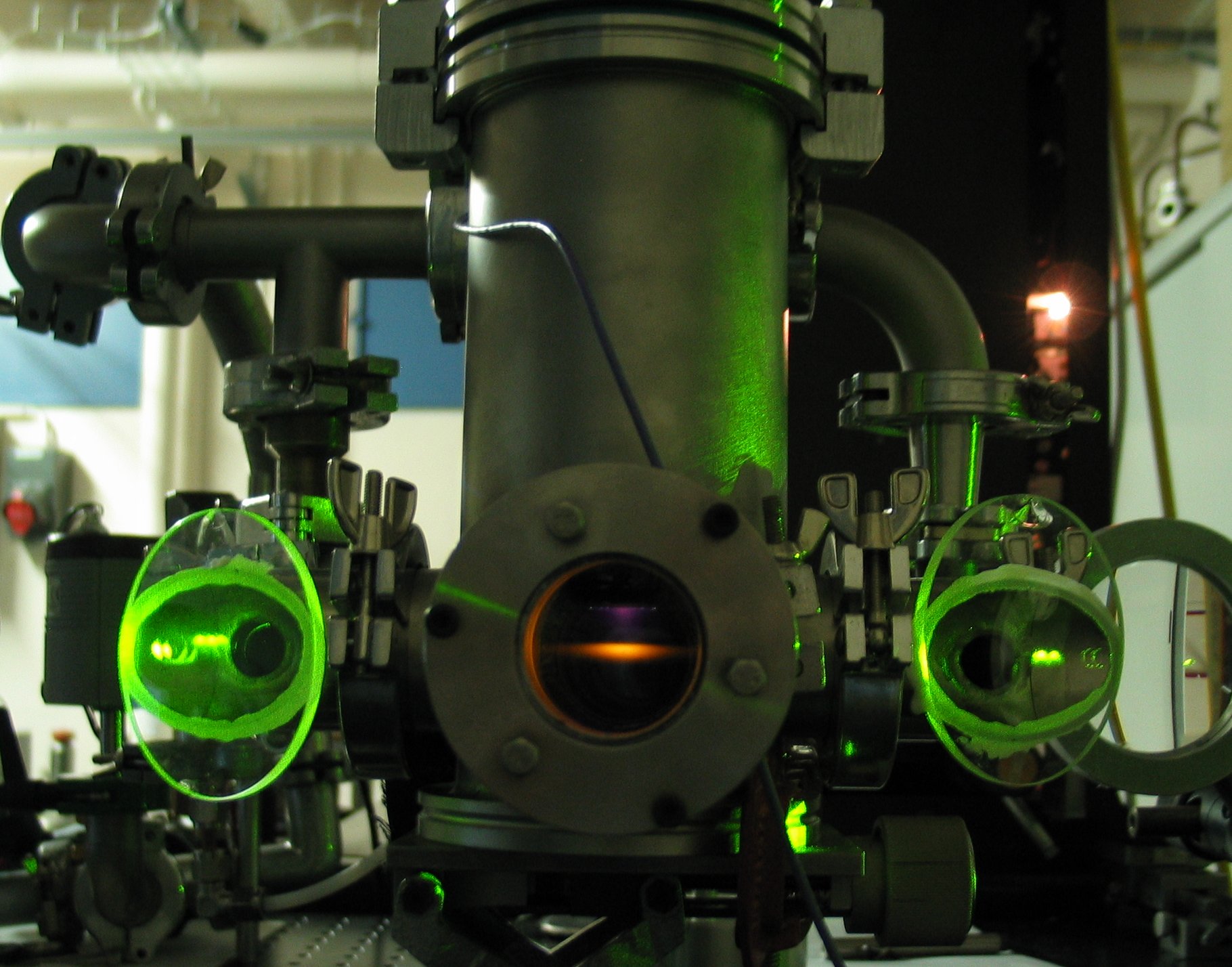
Fig. 1. The hollow cathode sputtering source producing MH radicals, which are probed by a green laser.
NiH :
Our group investigates the magnetic response of optical spectra of MH radicals that are of interest to the stellar astrophysical community. The NiH radical, whose electronic spectrum is weak, yet accessible in the visible spectrum was chosen as the prototype molecule for our laboratory-based experiments. The spectrum of NiH has been observed in sunspot spectra, and the relative abundances of 58NiH/60NiH may allow discrimination among different nucleosynthesis processes occurring in stellar environments. More importantly, NiH has a significant Zeeman response owing to high multiplicity electronic states. We therefore constructed an experiment capable of measuring the optical spectra of MH radicals in zero-field, for the initial characterization of the molecular energy levels, followed by the measurement of the specie’s optical spectrum in the presence of a magnetic field (<1 Tesla). NiH molecules are produced using a compact, hollow cathode, sputtering source fabricated here at the ILM (thesis R. Vallon).
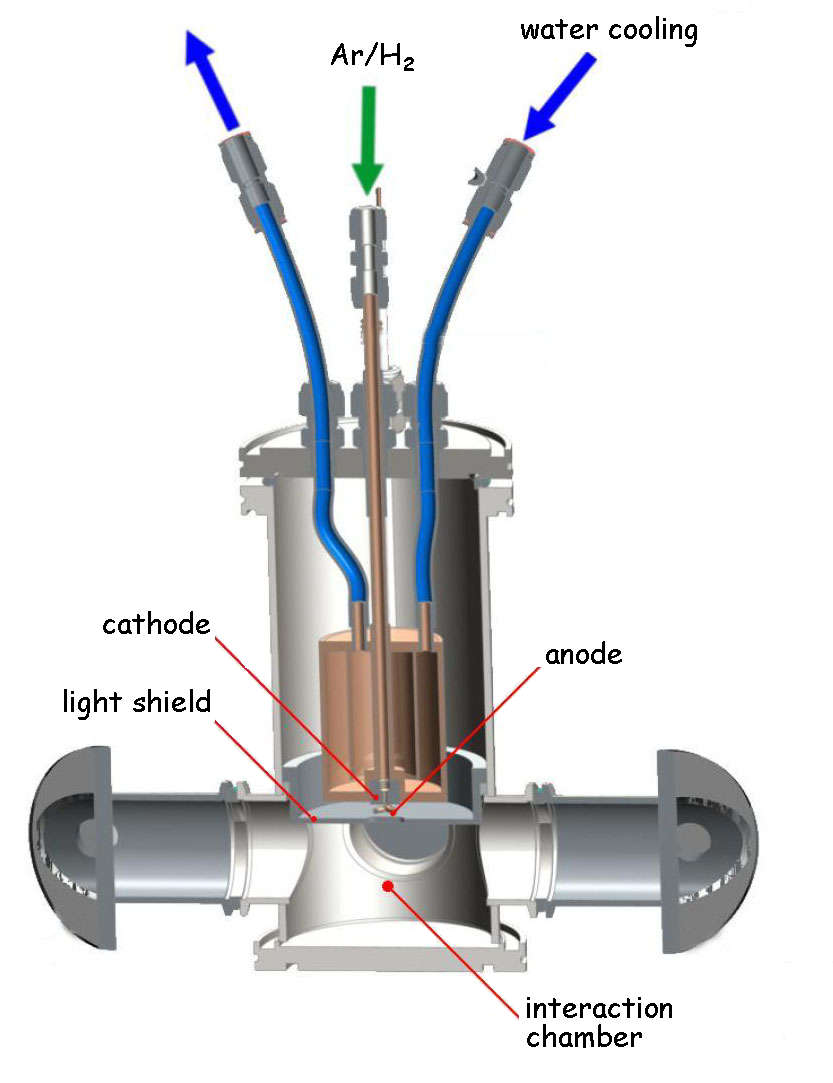
Fig. 2. Schematic diagram showing the hollow cathode sputtering source. The cathode is made of nickel and attached to the gas inlet by a headless set screw. The anode transfers the pulverization products through a slit toward the laser interaction zone. A cooling circuit stabilizes the cathode temperature near room temperature.
Our system produces NiH at temperatures near 310K : roughly ten rotational levels of the fundamental vibrational level are populated. While this temperature remains far below the temperatures found in star spots (∼3000K), emission spectrum allow observation of quantum levels thermally populated in these hotter environments. We record Fourier transform resolved, laser induced fluorescence spectra in the presence, or not, of a magnetic field of strength up to 1 Tesla, obtained using a magnetic circuit conceived by our group and based on permanent neodymium magnets.
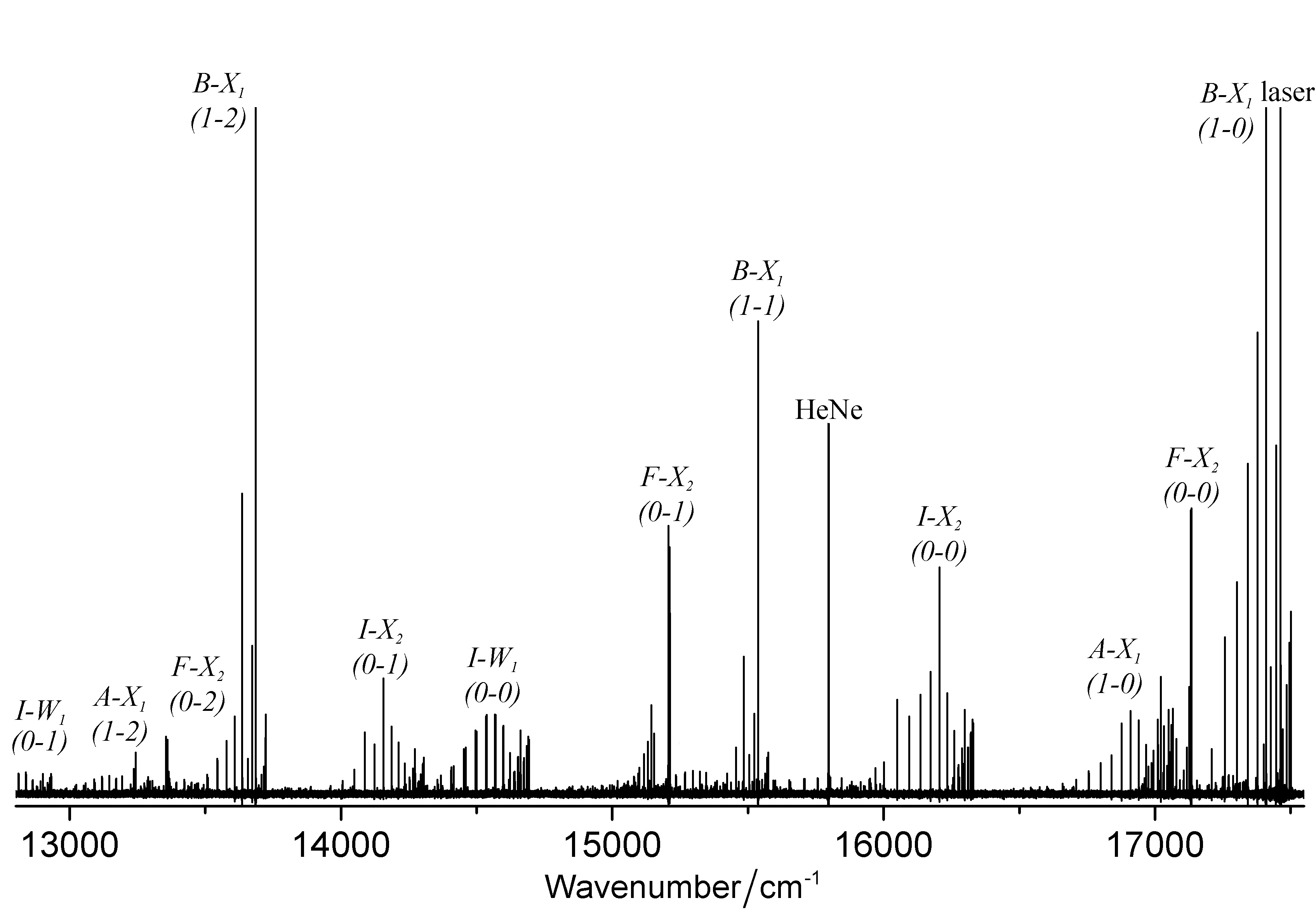
Fig. 3. Dispersed fluorescence in NiH, resolution 0.05 cm-1. Only the principal B - X transitions were expected in this spectrum following selective excitation of v’ = 1, J’ = 2½ of the B 2Δ5/2 state. The other excited states are accessed via collisional energy transfer, some of which would be difficult to reach by direct excitation from the ground state X1, the only state thermally populated by our source.
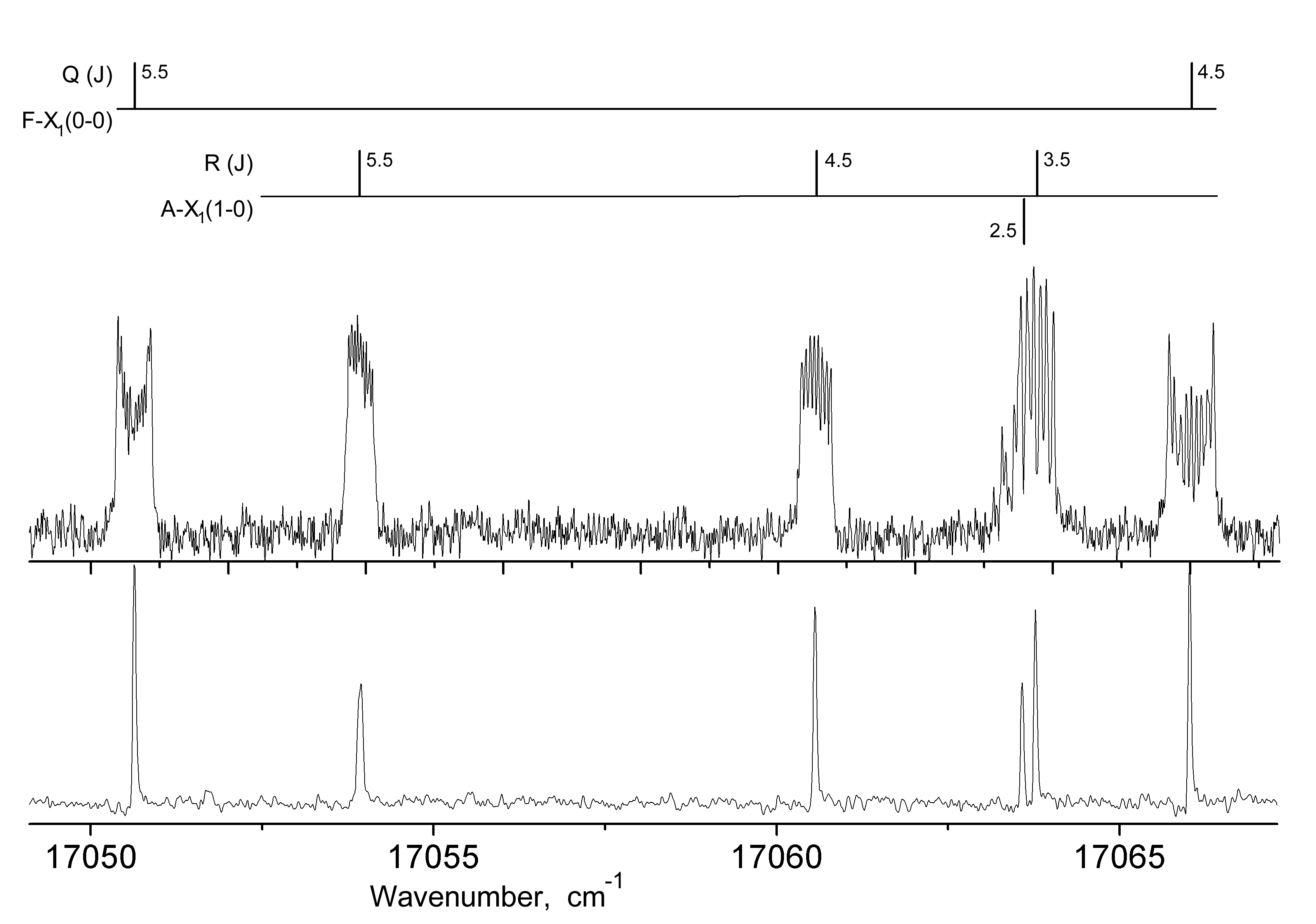
Fig. 4. Selected transitions from the same spectrum, recorded at a field strength of 0.72 T. Doppler resolution : 0.022 cm-1.
Certain transitions conserve a strong magnetic response at high J, unexpected in Hund’s coupling case (a). It is this type of particular signature that is of interest to astrophysicians. A series of in-house Zeeman simulation programs allowed extraction of Landé factors from recorded spectra. These experimental and analytical efforts have been published 1,2, and serve as working basis for our current explorations of the FeH radical, more difficult to produce and detect, with its spectrum situated in the near Infrared.
1-Resolved fluorescence spectra of NiH. Electronic structure, electronic energy transfer, and the Zeeman effect in low-lying states,
2- A. J. Ross, P. Crozet, C. Richard, H. Harker, S. H. Ashworth and D. W. Tokaryk, Mol Phys 110, 2019-2033 (2012). Zeeman spectroscopy of NiH: Landé factors of three X = 3/2 excited electronic states, H. Harker , C. Richard, G. Tourasse, P. Crozet, A.J. Ross, J. Mol. Spectrosc., 292, 28–34 (2013).
FeH :
In using our metal sputtering source, we have detected various atomic (Ni, Fe, Ar, H) and molecular (NiH, FeO) species in the visible region. There also exists a recurrent request for data - molecular Landé factors and opacities - on the part of the stellar spectropolarimetry community concerning the radical FeH. Indeed the infrared spectrum of FeH is a rich source of information concerning sunspots and brown dwarfs. We have therefore begun to study the molecular bands of FeH F 4Δ - X 4Δ (1 - 0) near 882 nm and (0 - 0) near 989 nm, for which the magnetic response is poorly known. We have constructed a laser spectrometer to systematically study these spectral bands via Zeeman spectroscopy with rotational resolution, and systematically recorded rotational transitions belonging to both of these bands. These spectra, assigned based on the zero-field FeH Atlas (http://bernath.uwaterloo.ca/FeH/), have allowed measurement of lambda splittings, necessary for interpreting Zeeman splittings. The sensitivity of our experiment allows access to the isotopologue 54FeH, in addition to 56FeH, over a fairly extensive range of rotational quantum numbers J (estimated rotational temperature = 500K). The spin-orbit components Ω =7/2, 5/2 et 3/2 have been detected. Example spectra follow in the figures below.
Comparison with pre-existing Zeeman data
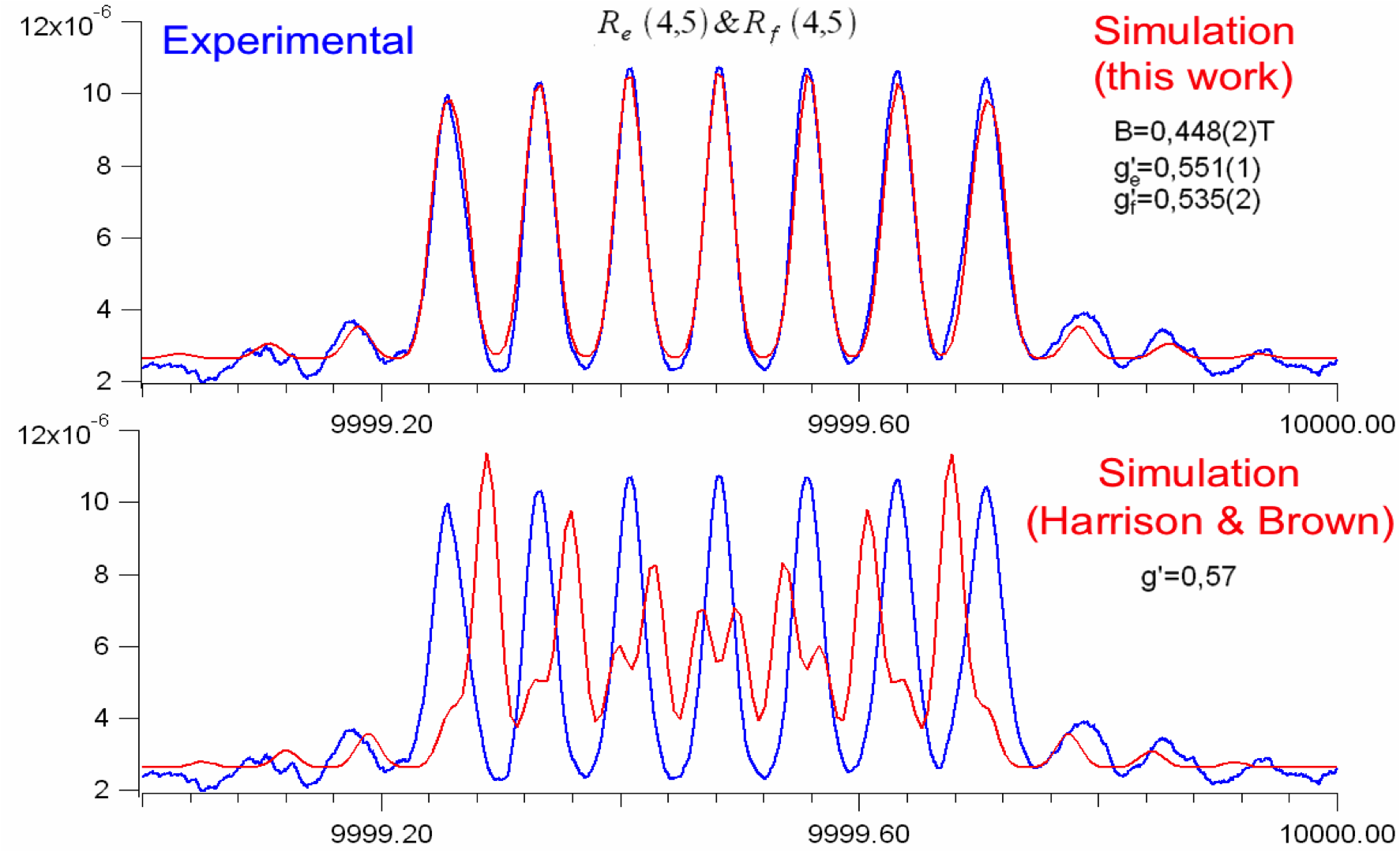
Fig 5. The laser excitation spectrum shown below concerns the R(4.5) transition of the “Wing-Ford” band, observed at a magnetic field strength of 0.45T, in σ polarization. The lower spectrum uses Landé g’J factors from literature as determined from sun spectra [Harrison & Brown, ApJ, 686:1426 (2008)].
Lambda doubling : influence on Zeeman profiles
The following example illustrates the importance of degeneracy lifting of the parity components in this species : the Zeeman profile of a rotational transition, here R(8.5), is completely transformed by its combination with lambda doubling.
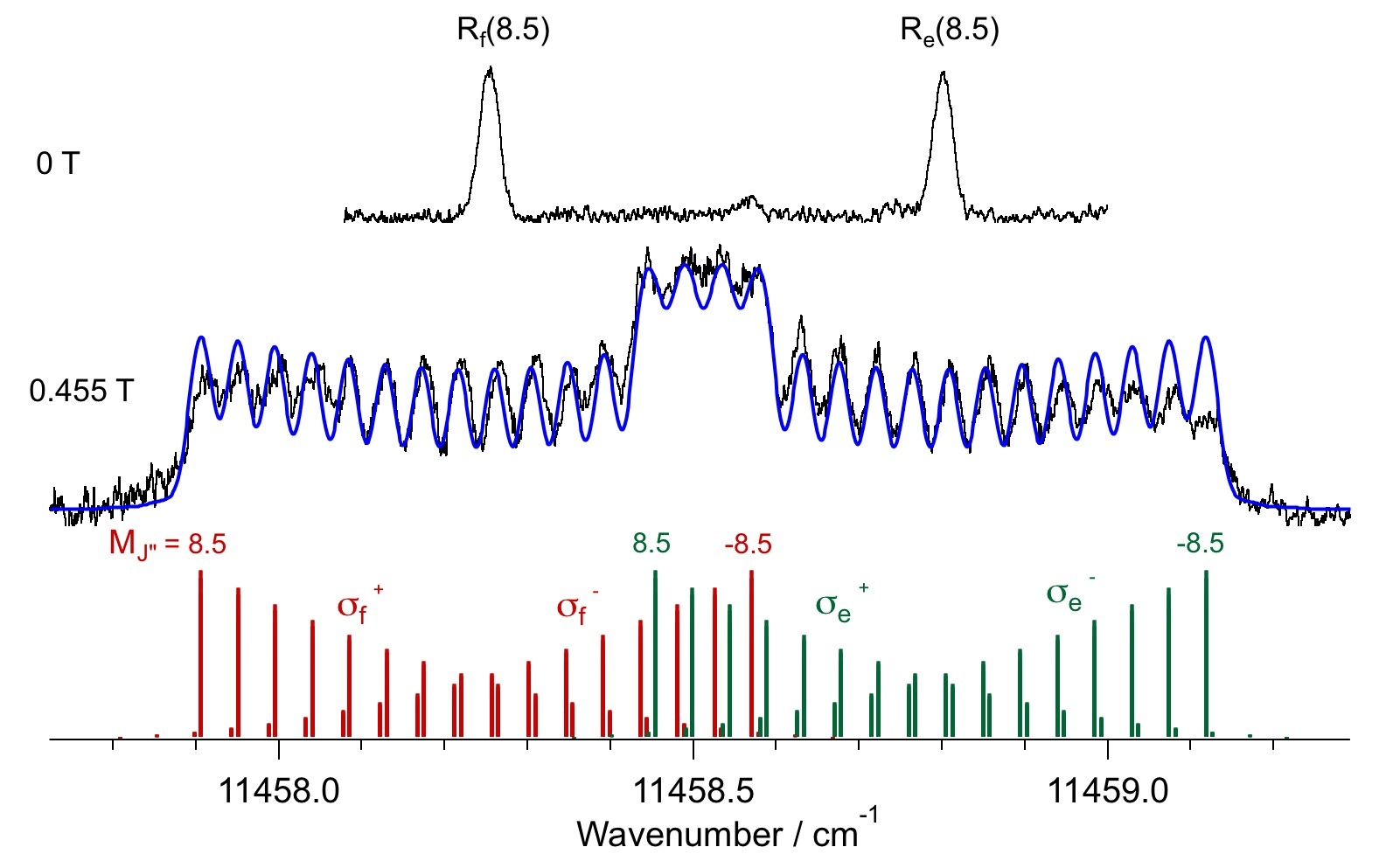
Fig 6. Transition R(8½), bande 1-0 du système F 4Δ7/2 - X 4Δ7/2 de 56FeH. Upper trace : zero-field, laser excitation spectrum (lambda doubling only). Middle trace : Zeeman spectrum recorded at 0.455 Tesla, superposed on simulated spectrum based on individual Zeeman e and f components, convoluted by a Doppler profile. Lower trace : stick spectrum of Zeeman components f (red) and e (green).
A database, currently under construction3, will provide the astrophysical community with a number of missing Landé g’J factors, starting with the spin-orbit component Ω =5/2 and 7/2 of 56FeH. A campaign of measurements is currently underway at the THEMIS observatory (collaboration : A. López-Ariste) to model the spectra of sunspots and to obtain more precise measurement of the local magnetic field through use of these new factors. The figure shown below shows the spectrum of a sunspot obtained in Stokes V polarization, compared with the same spectrum obtained in absorption (Stokes I). Aside from the Titanium transition, the other features are essentially due to FeH. The Stokes V spectrum is comprised of two successive recordings and illustrates the reproducibility of the observations obtained using the THEMIS spectropolarimeter.

Fig 7. Spectrum of a sunspot obtained in Stokes V polarization, compared to absorption spectrum (Stokes I).
These results pertaining to the 56FeH radical have provided, for the first time to the best of our knowledge, an extensive compilation of experimental Landé factors concerning the first two spin-orbit components Ω=5/2 and 7/2, up to J=10½, as well as precise measurements of the zero-field transition frequencies, complementing and refining the FeH Atlas by Bernath and col. These first results on FeH, along with results from sunspot measurements from the THEMIS observatory, have given rise to publications and presentations at molecular spectroscopy and stellar astrophysics conferences3,4,5.
3-Determination of Landé factors in the F 45/2,7/2 state of 56FeH by laser excitation spectroscopy P. Crozet , G. Dobrev , C. Richard , A. J. Ross, J. Mol. Spectrosc., 303, 46–53 (2014).
4-Laboratory Determination of Landé Factors for the Molecular Radical FeH" P. CROZET, G. TOURASSE, A. ROSS, F. PALETOU and A. LOPEZ ARISTE Proceedings of first European Conference on Laboratory Astrophysics (ECLA), Paris, 26 - 30 September 2011, EAS Publications Series, 58 (2012) 63–67
5-On the spectropolarimetric signature of FeH in the laboratory and in sunspot, P. Crozet, A. J. Ross, N. Alleq, A. López Ariste, C. Le Men and B. Gelly, Magnetic Fields throughout Stellar Evolution, Proceedings IAU Symposium No. 302 (2013),164-165, Int.Astron. Union 2014, P. Petit, M. Jardine & H. Spruit, eds.
Perspectives : High sensitivity spectroscopy of FeH and CrH for stellar astrophysics :
We propose to undertake, at very high sensitivity, the spectroscopic characterization of “stellar" bands of FeH : F4Δ-X4Δ(1,0) vers 882 nm et (0,0) vers 989 nm, et de CrH : A6Σ+– X6Σ+, (0,0) and (0,1), vers 861 and 997 nm.
Solar and brown dwarf spectra (type L) reveal FeH transitions with rotational quantum numbers on up to the order of J=20½, pertaining to the four spin-orbit components (Ω=7/2, 5/2, 3/2, 1/2) and numerous vibrational hot bands. Furthermore, due to the current lack of cross sectional data, opacity calculations for L-type stars are based on ab ignition calculations (M. Dulick et al, ApJ, 594:651–663(2003)). In an attempt to surpass the limitations of the previous experiment, a new absorption source, constructed in collaboration with the University of Sofia, is currently being characterized by our research group. This new source will allow access to molecular absorption coefficients of FeH for stellar opacity calculations and will improve the detection sensitivity pertaining to elevated angular momentum states, which are observed in abondance in stellar spectra. This project is pursued in collaboration with the research group of Professor A. Pashov of the University of Sofia (Department of Optics and Spectroscopy - Physics). G. Dobrev, joint doctoral student Lyon/Sofia, has recently obtained promising results during testing of the source on NiH, through the differential laser absorption measurement of the absolute concentration of a known NiH transition.
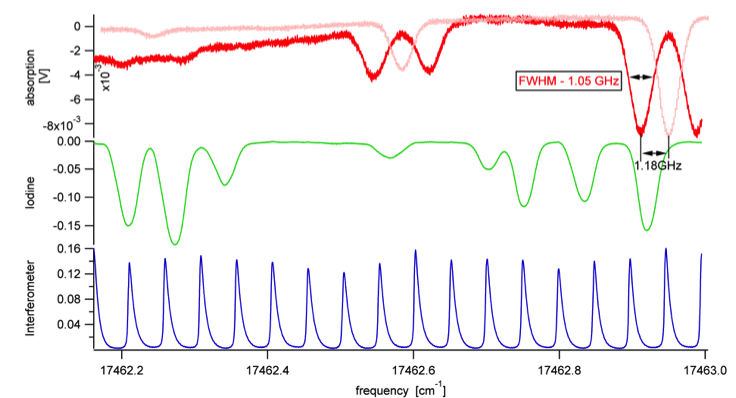
Fig 8. Absorption transition Q(2½) B-X 1-0 of NiH. [NJ ]= 3 108/cm3. Discharge source : absorption length 30 cm, p=320 mTorr, gas mixture Ar(H2,10%), i=150 mA. Zero-field spectra of NiH, and with axial field parallel to laser beam (B=0.1T). Three isotopologues are observed in increasing frequencies : 62NiH, 60NiH, and 58NiH. Reference spectrum of 127I2. Fabry-Perot marker.
1/ CRDS measurements in the near infrared (collaboration Pr. D. Tokaryk,UNB Canada)
We plan to test the coupling of this source to a very high finesse optical cavity (R=0.99995) in the near IR in order to measure cavity ring-down times that will provide linear absorption coefficients for the the FeH and CrH radicals probed using a longitudinal, monoxide, cw Ti:sa laser injecte into the cavity. Combined with fluorescence lifetimes, the absorption cross sections and the concentrations of the species become accessible. Application of an axial magnetic field will further provide access to transition Landé factors much smaller than those observed in the preceding work.
2/ Mesures large bande par spectroscopie Vernier
Transition metal hydride (MH) spectra are important for the astrophysical cold stellar environments (<4000K), with several species having been identified as probes useful for the local cartography of temperatures and magnetic fields : zero-field data on FeH and CrH (measured or extrapolated transition frequencies and calculated Einstein A coefficients) have been compiled in an Atlas by P. W. Bernath and col. CrH is a primary spectroscopic marker for brown dwarves and CrD may potentially be used as a “deuterium test probe” to aid in distinguishing between cold stellar objects (with fusion reactions at their center) and planets (no fusion). The magnetic response of CrH is poorly known. In addition, the absorption cross sections of both species are highly important for modeling cold star opacities, ab initio calculations having been revealed as unreliable for these molecular species.
The Vernier spectrometer (cf group web page) developed by L. Rutkowski during her thesis (2014 - direction J. Morville) is the ideal instrument for performing an exhaustive study of metal hydrides. Indeed, their spectra cover several tens of THz, with Doppler widths on the order of 1 GHz at the working temperature of our hollow cathode sputtering source, and with quite weak absorption coefficients. This new technique couples a Ti:Sa femtosecond laser with a high finesse optical cavity, combining the large band of a femtosecond source ( ~1000 cm-1 ~ 30 THz), with high spectral resolution (<0.03 cm-1) and low recording time (~1s to cover the entire spectral band). The sensitivity provided by insertion of the new source in the optical cavity and the improved precision of the frequency comb locked to an external reference, should open the way to much more efficient and complete measurement of molecular species of astrophysical interest. The goal is to produce a complete and precise database for the plasma and stellar astrophysics communities, which provides transition frequencies, opacities, and Landé factors.

















